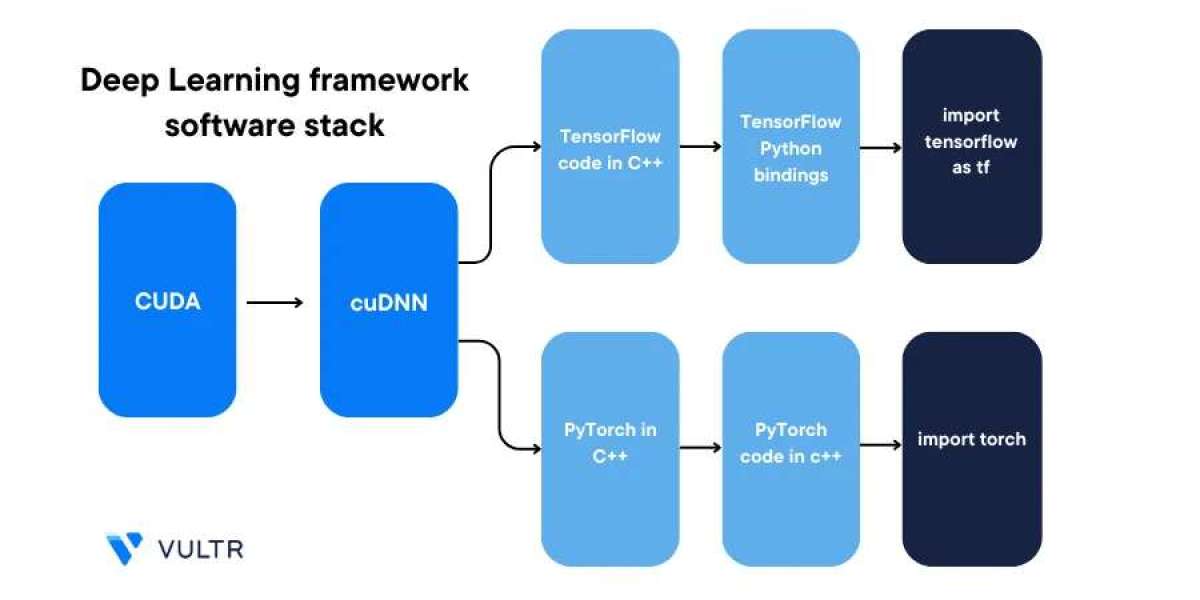If you're looking to install cudnn on Ubuntu 22.04 to accelerate your deep-learning workflows with GPU power, this step-by-step breakdown based on the official Vultr Docs guide (updated April 1, 2025) is ideal for you .
What Is cuDNN — And Why It Matters
cuDNN (CUDA Deep Neural Network library) is a GPU-accelerated library from NVIDIA designed to optimize deep neural network operations like convolutions, pooling, normalization, and activation. Installing cuDNN properly allows deep learning frameworks—such as TensorFlow or PyTorch—to harness GPU capabilities for faster training and inference. This is especially important if you're working with resource-intensive models like GANs or LLMs.
Prerequisites Before Installing cuDNN
Before diving in, make sure your environment checks the following:
- You're running Ubuntu 22.04
- You have an NVIDIA GPU and the appropriate NVIDIA driver installed
- CUDA toolkit is already configured
- You’ve created a non‑root user (e.g. pythonuser) with sudo privileges and logged into it
If CUDA isn't installed yet, Vultr has a companion guide for Ubuntu 22.04 that walks through installing the CUDA toolkit natively or via Conda
Installing cuDNN Natively (Recommended)
According to Vultr, the native installation using the release file is preferred because it's more stable and avoids system-level conflicts.
- Visit NVIDIA’s cuDNN page, accept the license, and download the Linux tar‑ball specifically aligned with your CUDA version (e.g. cuDNN 8.9.4 for CUDA 12.x). The sample file name in the guide is cudnn-linux-x86_64-8.9.4.25_cuda12-archive.tar.xz .
Transfer the file to your server (e.g., via SCP), then extract it:
cd ~/Downloads
tar -xf cudnn-linux-x86_64-8.9.4.25_cuda12-archive.tar.xz
Copy headers and libraries into your CUDA installation:
sudo cp cudnn-linux‑*/include/cudnn*.h /usr/local/cuda/include/
sudo cp -P cudnn-linux‑*/lib/libcudnn* /usr/local/cuda/lib64/
sudo chmod a+r /usr/local/cuda/include/cudnn*.h /usr/local/cuda/lib64/libcudnn*
- Installing cuDNN via Conda (Alternative)
If you prefer Conda, Vultr also explains how to install cuDNN inside a Conda environment. For example, install cuDNN 8.9.2.26 compatible with CUDA 11.x:
conda install -c default cudnn=="8.9.2.26"
Take care to match CUDA and cuDNN versions appropriately using Conda channels.
Verifying the cuDNN Installation
Vultr walks you through verifying your installation using NVIDIA’s verification package or by inspecting the header. For native installation:
cat /usr/local/cuda/include/cudnn_version.h | grep CUDNN_MAJOR -A2
You should see the major, minor, and patch version printed (e.g. 8.9.4). This confirms that cuDNN is installed properly.
If you're using the .deb installer, you can also compile and run a sample program—like mnistCUDNN—using the extracted sample files to further validate functionality.Ensuring System Compatibility
CuDNN requires compatibility among several system components. Vultr recommends checking:
- That your NVIDIA driver is installed and working (nvidia‑smi should report GPU status)
- That your system kernel version meets minimum requirements (e.g. uname -r output like 5.15.0‑75)
- That your GCC version is recent enough to compile any necessary samples or programs
Confirming these ensures cuDNN integrates smoothly with your existing GPU stack.
Tips & Common Pitfalls
- Version mismatch: Always check that your cuDNN version matches your CUDA; mismatches can cause runtime errors.
- File paths: Ensure you're copying into /usr/local/cuda/include and lib64, especially if you have multiple CUDA versions.
- Permissions: Use chmod a+r … so all users can access cuDNN libraries.
Final Words
With this guide, you've successfully learned how to install cudnn on Ubuntu 22.04 using Vultr’s official documentation. Whether you choose the native release-file method or Conda-based installation, this setup unlocks GPU-accelerated deep learning performance on your Ubuntu server.
Now you're ready to run TensorFlow or PyTorch workloads at a whole new speed. Go ahead, install cudnn, and let your GPU power your AI ambitions—this Vultr-based approach ensures you do it smoothly.



